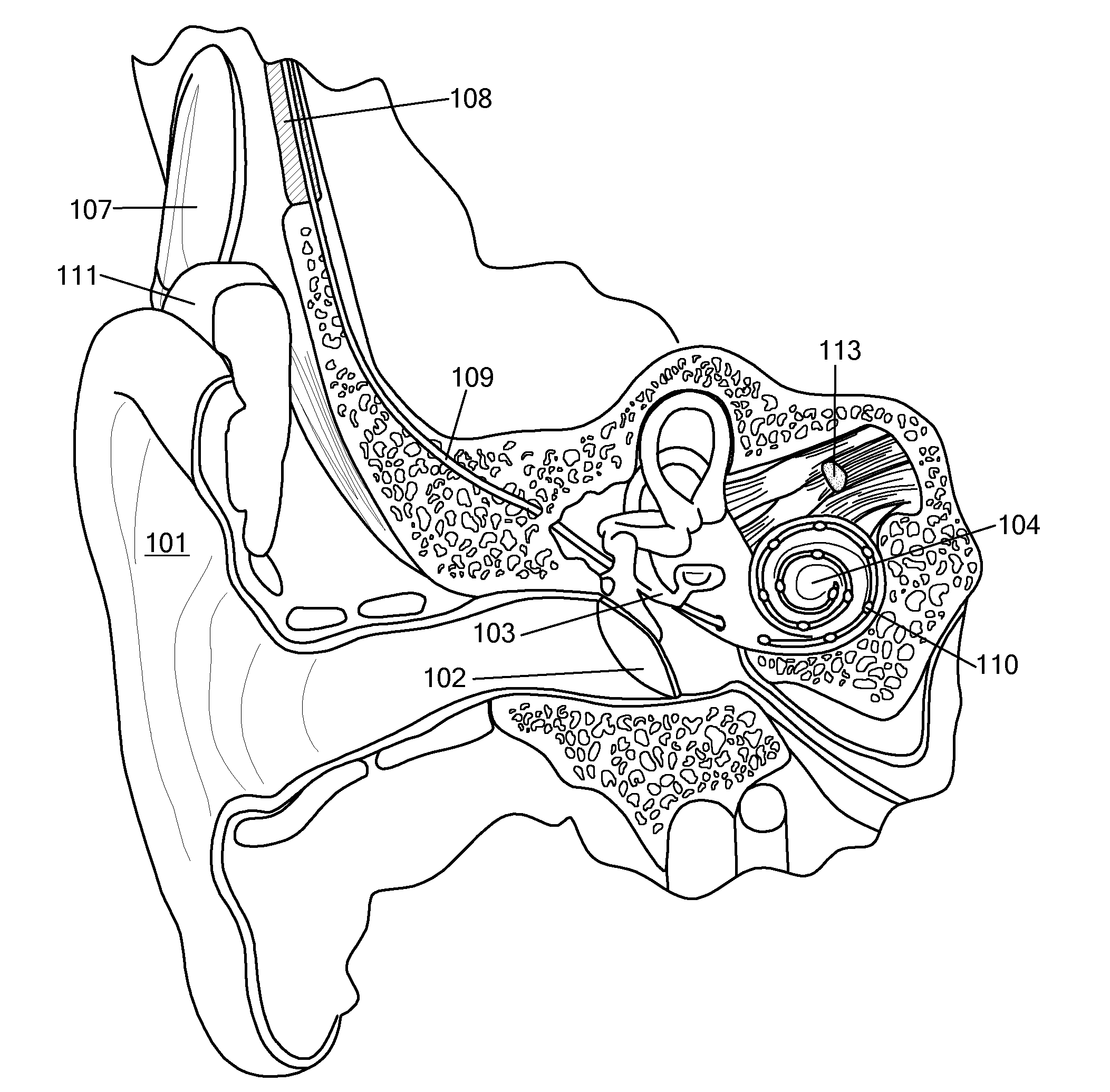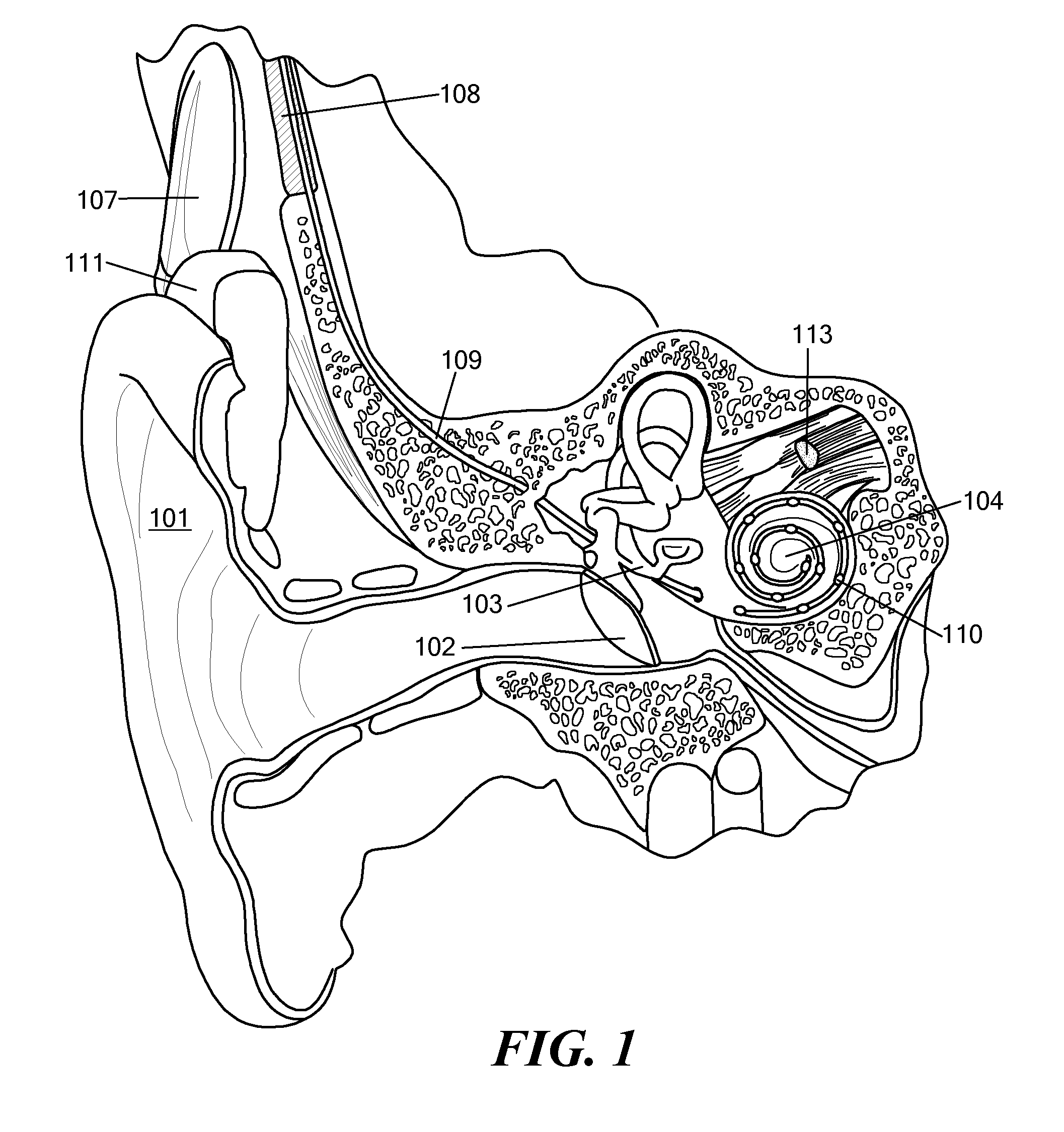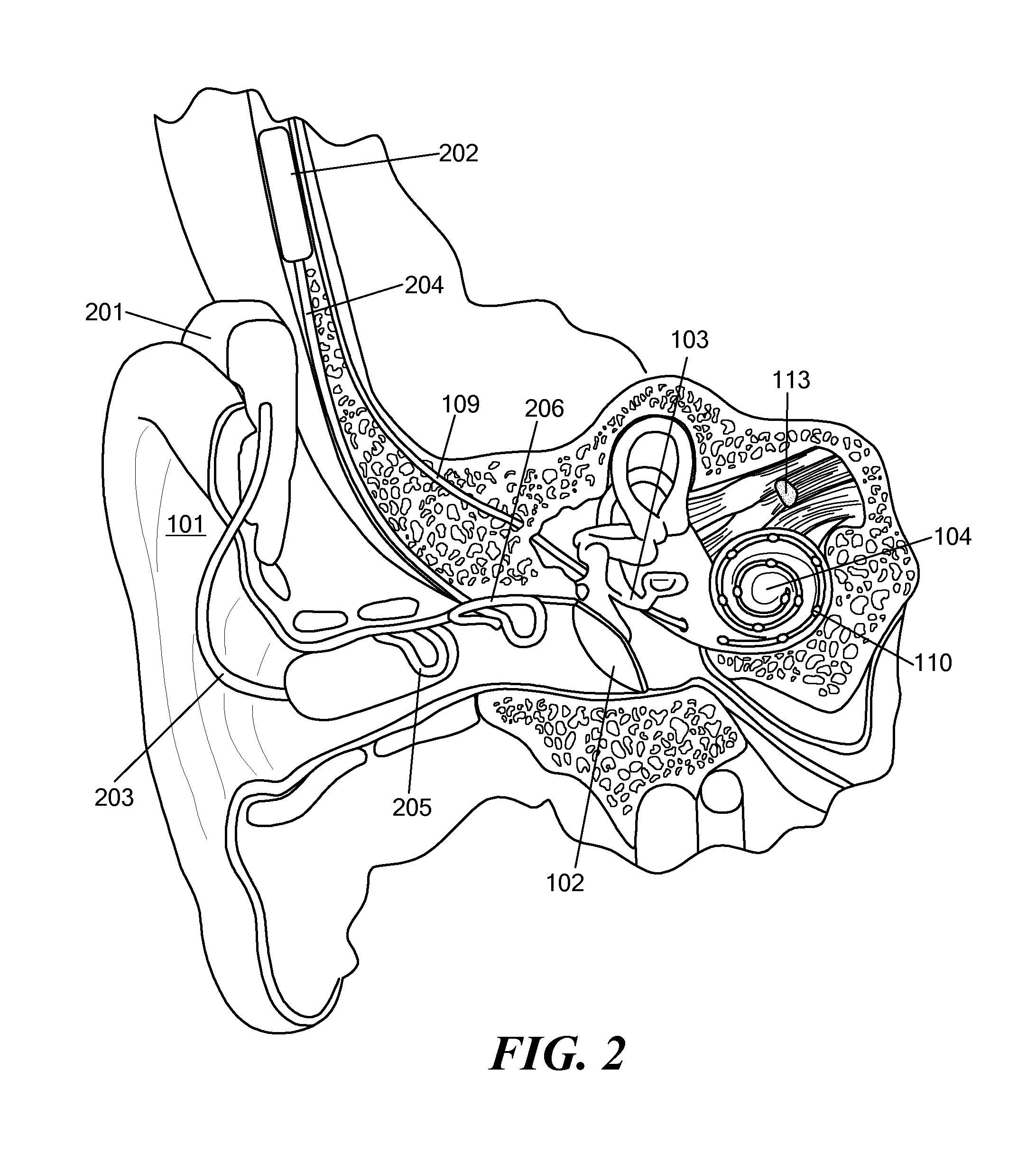Inductive Signal and Energy Transfer through the External Auditory Canal
a technology of external auditory canal and inductive signal, which is applied in the direction of deaf-aid sets, electrical equipment, therapy, etc., can solve the problems of not being able to achieve uniform winding from the center to the outer radius, unable to achieve magnetic resonance imaging, and unable to achieve uniform size and shape, and inhibiting the production of cerumen
- Summary
- Abstract
- Description
- Claims
- Application Information
AI Technical Summary
Benefits of technology
Problems solved by technology
Method used
Image
Examples
Embodiment Construction
[0019]Partially implantable systems such as hearing implants (HI) include both external and implantable components. Hearing implants include, e.g., cochlear implants (CI's), middle ear implants (MEI's), bone conduction implants, etc. In such systems, transfer of electrical energy and data signals is based on an external primary coil (referred to as the transmitter coil) and an internal secondary coil (referred to as the receiver coil). Many partially and totally implantable medical systems also require regular charging cycles for their implantable batteries. Instead of the traditional transcutaneous inductive link located on the side of the head near the mastoid bone above and behind the pinna (outer ear) as with existing HI systems, embodiments of the present invention transfer energy and data signals inductively through the skin at the outer wall of the ear canal.
[0020]FIG. 2 shows an inductive coil arrangement for an ear canal of a recipient patient according to one embodiment of...
PUM
 Login to View More
Login to View More Abstract
Description
Claims
Application Information
 Login to View More
Login to View More - R&D
- Intellectual Property
- Life Sciences
- Materials
- Tech Scout
- Unparalleled Data Quality
- Higher Quality Content
- 60% Fewer Hallucinations
Browse by: Latest US Patents, China's latest patents, Technical Efficacy Thesaurus, Application Domain, Technology Topic, Popular Technical Reports.
© 2025 PatSnap. All rights reserved.Legal|Privacy policy|Modern Slavery Act Transparency Statement|Sitemap|About US| Contact US: help@patsnap.com



